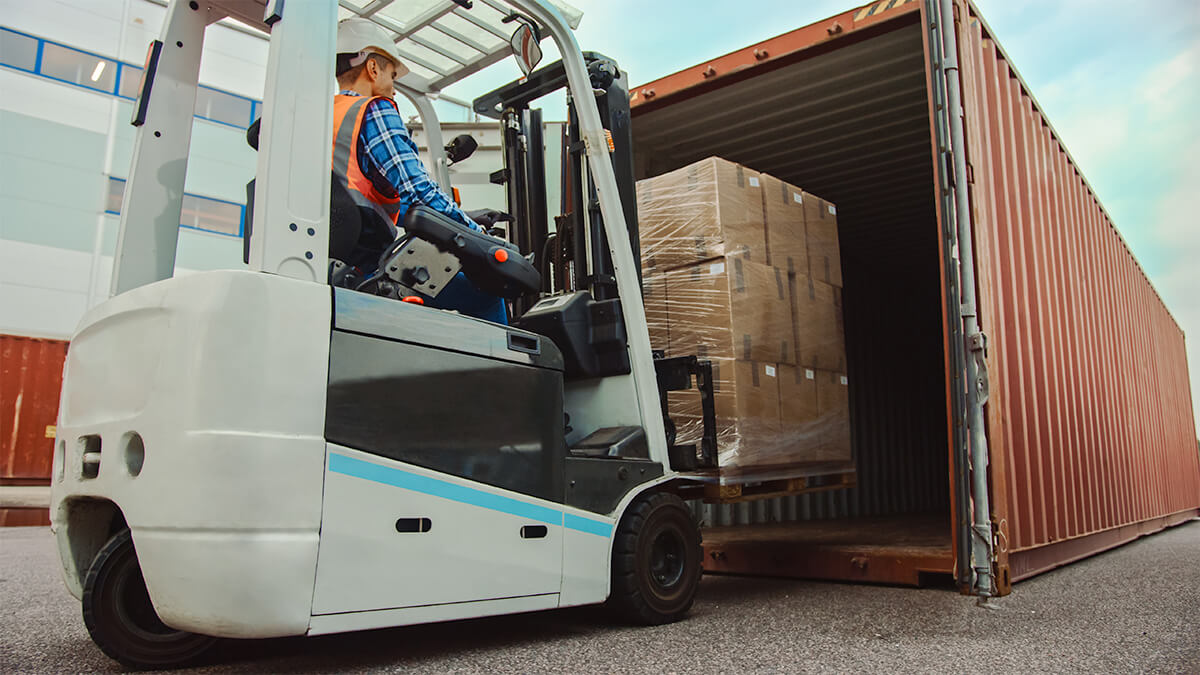
Two standard methods of shipping products and goods are floor loaded containers and palletized containers. There are specific situations where one method is preferred over the other. And, just as important, based on the type of method used, there are right and many wrong ways to unloading floor loaded containers as opposed to a container whose cargo has been palletized. In this posting, Labor Loop, a leading firm that provides on-demand lumper services, details what each method entails as well as the correct ways to unload containers that have been either floor loaded or palletized.
By definition, floor loaded goods means the cargo has been loaded directly onto the floor of the shipping container. You may also know it as ‘floor stacking’. Generally, floor-loaded containers are filled with goods that are stacked up to the ceiling of the container. Palletized loads are those that are first stacked on a pallet. The goods are then tied with plastic wrap and/or metal straps to create a single unit composed of several stacked products. Several palletized columns will be prepared then loaded into the shipping container using hand trucks, ramps, or, depending on the size and weight of the palletized goods, using a forklift.
Before continuing a discussion of the correct procedure to unloading floor loaded containers, we need to clarify when the floor-loaded method is the best option. Generally, it is reserved for loading bulky and heavy items, as more fragile products would likely sustain damage or loss if this method is used. However, the chief benefit to floor loading cargo is that more products can be loaded into the container than with the palletized loading method. Shipping is expensive, so filling a container to its acceptable limits is preferable, as the savings on shipping outweigh the additional labor costs to loading and unloading floor loaded containers. Also, less packaging is required by floor loading containers. A con to using this process is that both loading and unloading floor loaded containers takes longer than if the palletized method was used.
Palletized container loading is the preferred method when shipping lightweight or small items such as electronics, as the products are wrapped or tied together into a single unit. The pallet then elevates the products off the floor of the container, which prevents damage if the container floor is flooded. The chief pro to this method is the ease with which lumpers can load and unload palletized goods. This method’s con is that less product can be transported in a container due to the space occupied by the pallet. Additionally, the cost of the wrapping, ties, and the pallet itself are considerations as these contribute to increased overhead costs.
When lumpers are cleared to unload a container, should the cargo be entirely palletized, then unloading will be performed using a forklift. This is a process that, if performed by seasoned professionals such as the teams deployed on-demand by Labor Loop, can be executed quickly and safely. As for unloading floor-loaded containers, this is entirely a manual process as the cargo will be heavy, possibly items such as equipment which cannot be boxed. Its removal must be performed with care and consideration by professional unloaders. Statistically, it takes five times longer to unload a floor loaded container than one that is palletized.
Whatever your container loading and/or unloading requirements, Labor Loop can swiftly assemble and deploy a seasoned team to efficiently perform these services. For transportation carriers, operations managers, and warehouse overseers, Labor Loop’s efficient, on-demand teams offer the ideal solution to reining in their supply chain expenses.
Speak with our team today to learn more!
